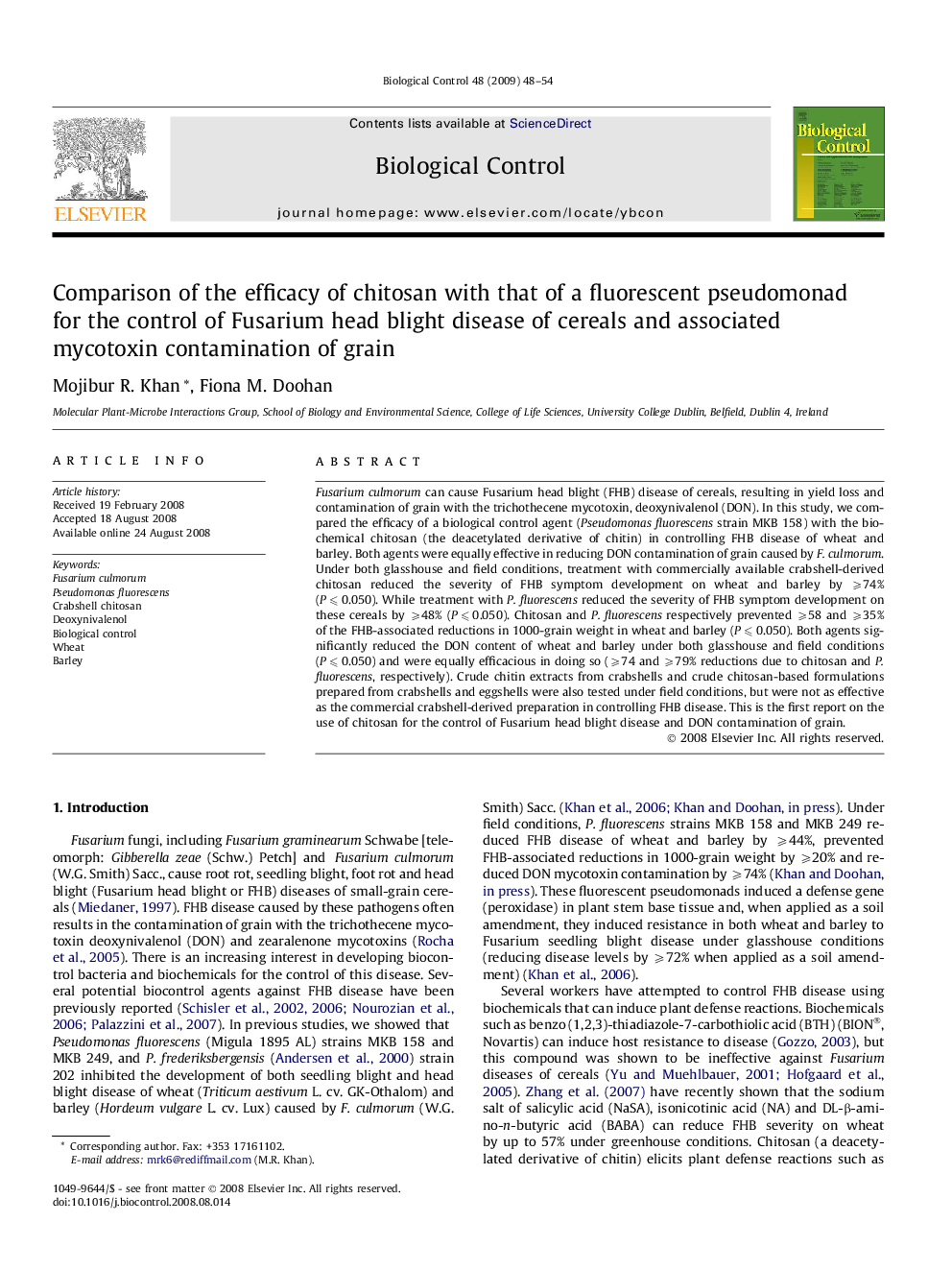| Article ID | Journal | Published Year | Pages | File Type |
|---|---|---|---|---|
| 4504661 | Biological Control | 2009 | 7 Pages |
Fusarium culmorum can cause Fusarium head blight (FHB) disease of cereals, resulting in yield loss and contamination of grain with the trichothecene mycotoxin, deoxynivalenol (DON). In this study, we compared the efficacy of a biological control agent (Pseudomonas fluorescens strain MKB 158) with the biochemical chitosan (the deacetylated derivative of chitin) in controlling FHB disease of wheat and barley. Both agents were equally effective in reducing DON contamination of grain caused by F. culmorum. Under both glasshouse and field conditions, treatment with commercially available crabshell-derived chitosan reduced the severity of FHB symptom development on wheat and barley by ⩾74% (P ⩽ 0.050). While treatment with P. fluorescens reduced the severity of FHB symptom development on these cereals by ⩾48% (P ⩽ 0.050). Chitosan and P. fluorescens respectively prevented ⩾58 and ⩾35% of the FHB-associated reductions in 1000-grain weight in wheat and barley (P ⩽ 0.050). Both agents significantly reduced the DON content of wheat and barley under both glasshouse and field conditions (P ⩽ 0.050) and were equally efficacious in doing so (⩾74 and ⩾79% reductions due to chitosan and P. fluorescens, respectively). Crude chitin extracts from crabshells and crude chitosan-based formulations prepared from crabshells and eggshells were also tested under field conditions, but were not as effective as the commercial crabshell-derived preparation in controlling FHB disease. This is the first report on the use of chitosan for the control of Fusarium head blight disease and DON contamination of grain.
